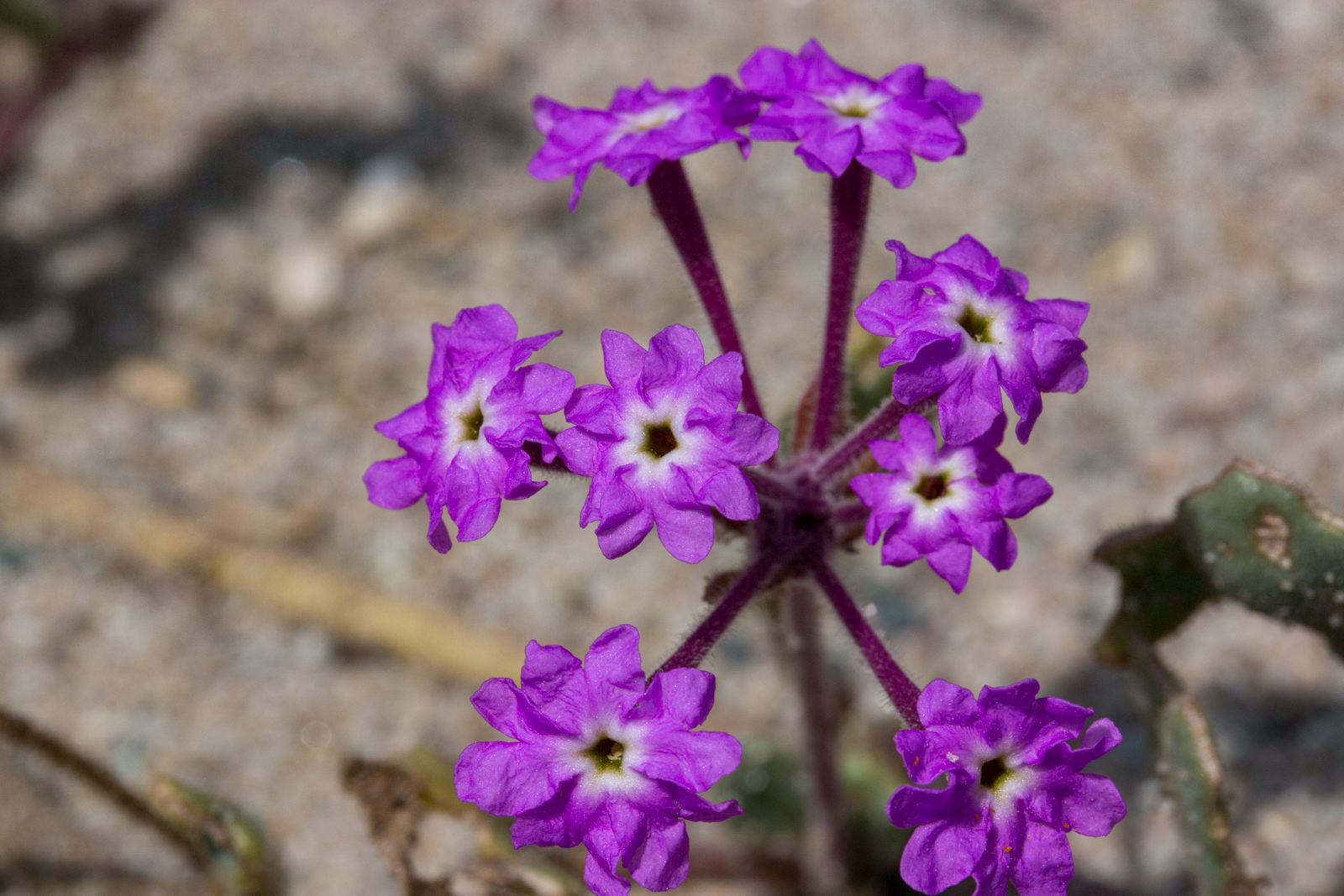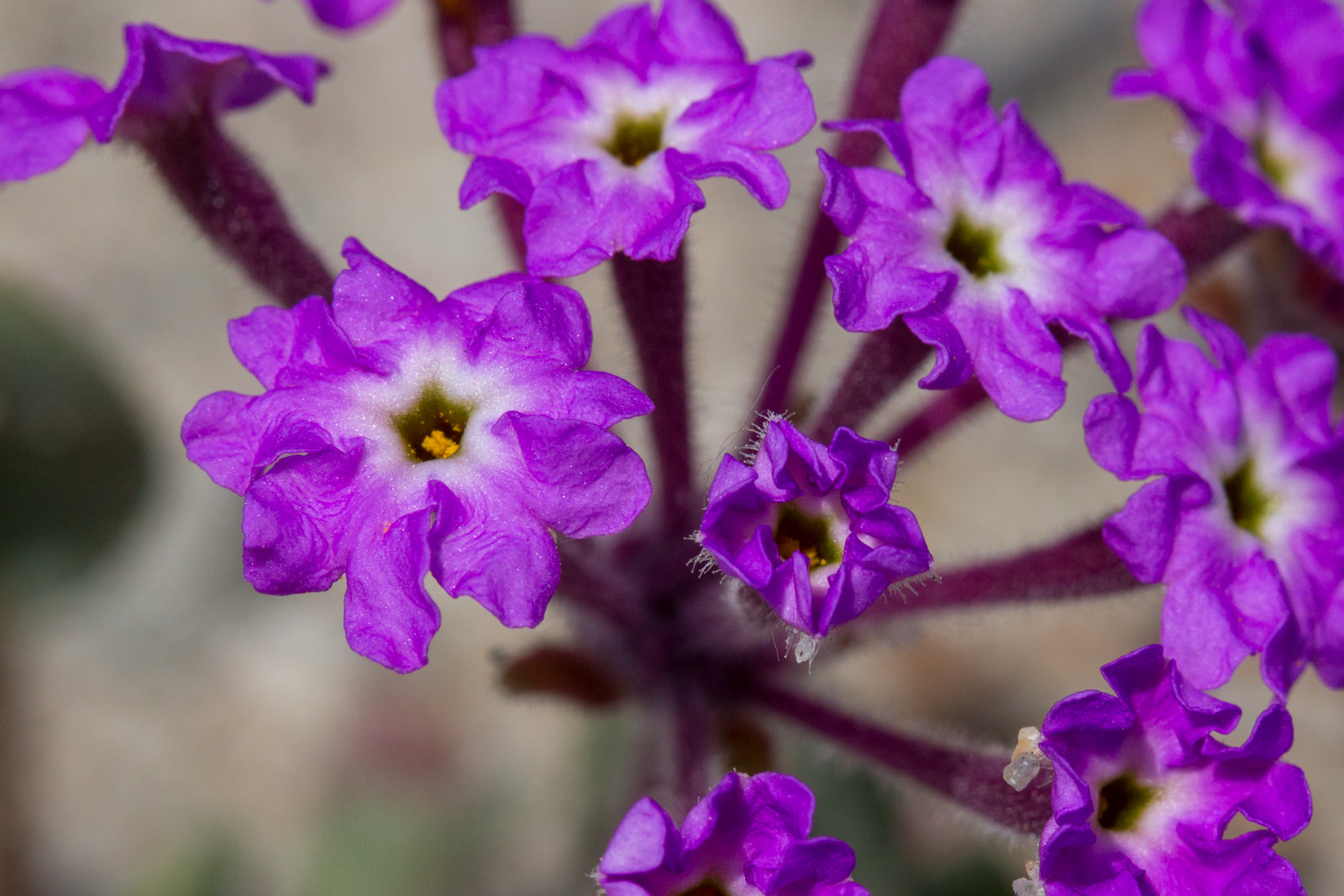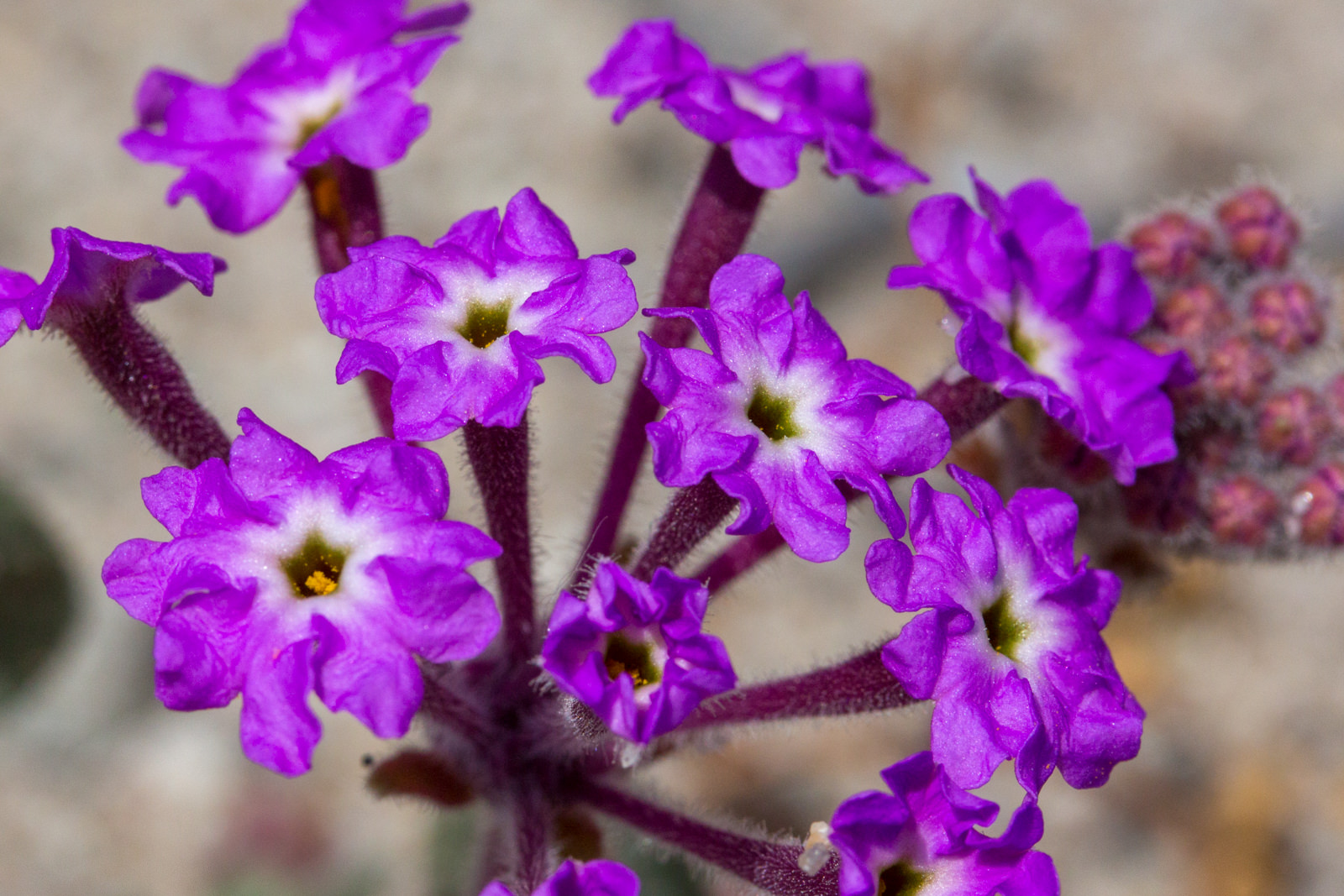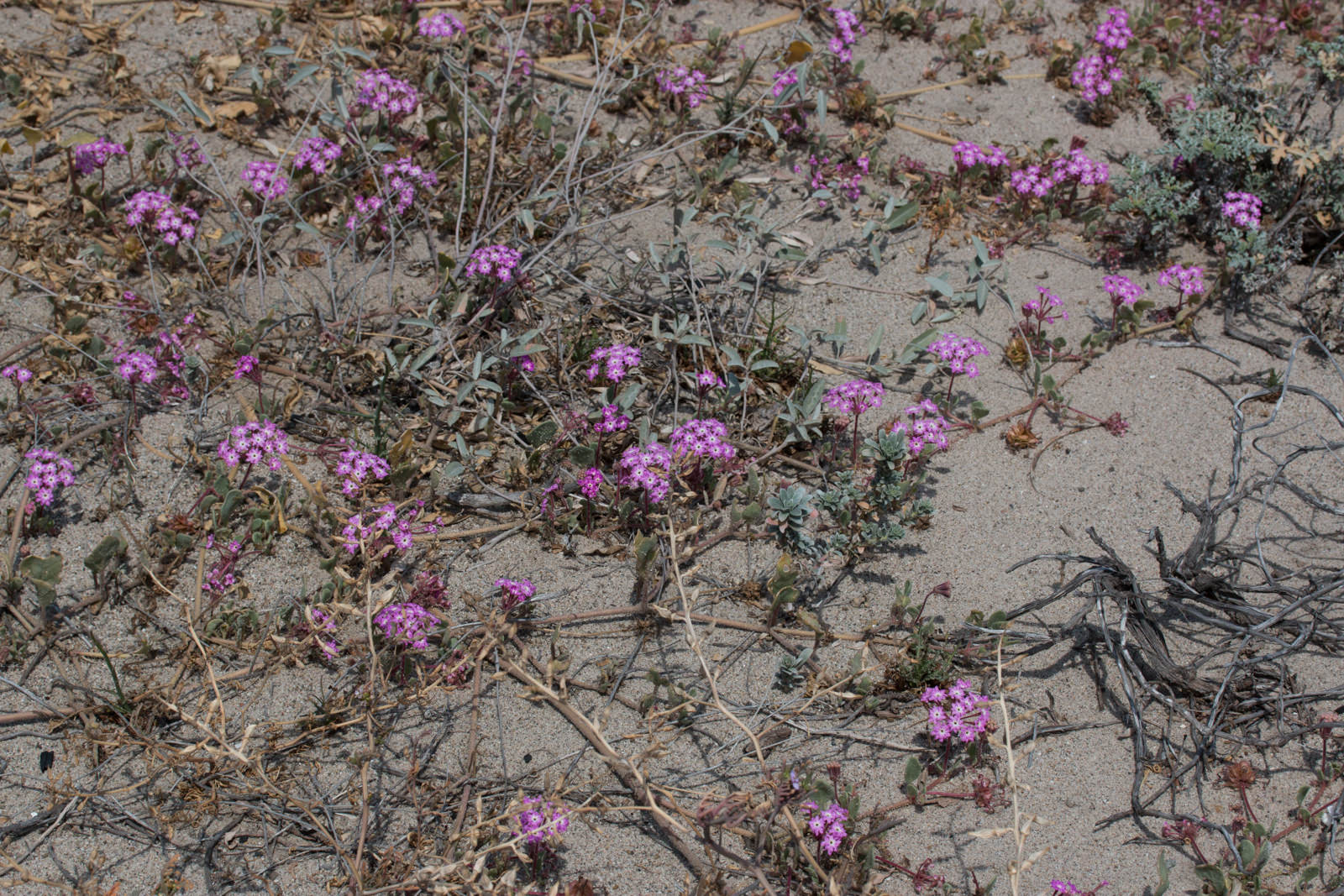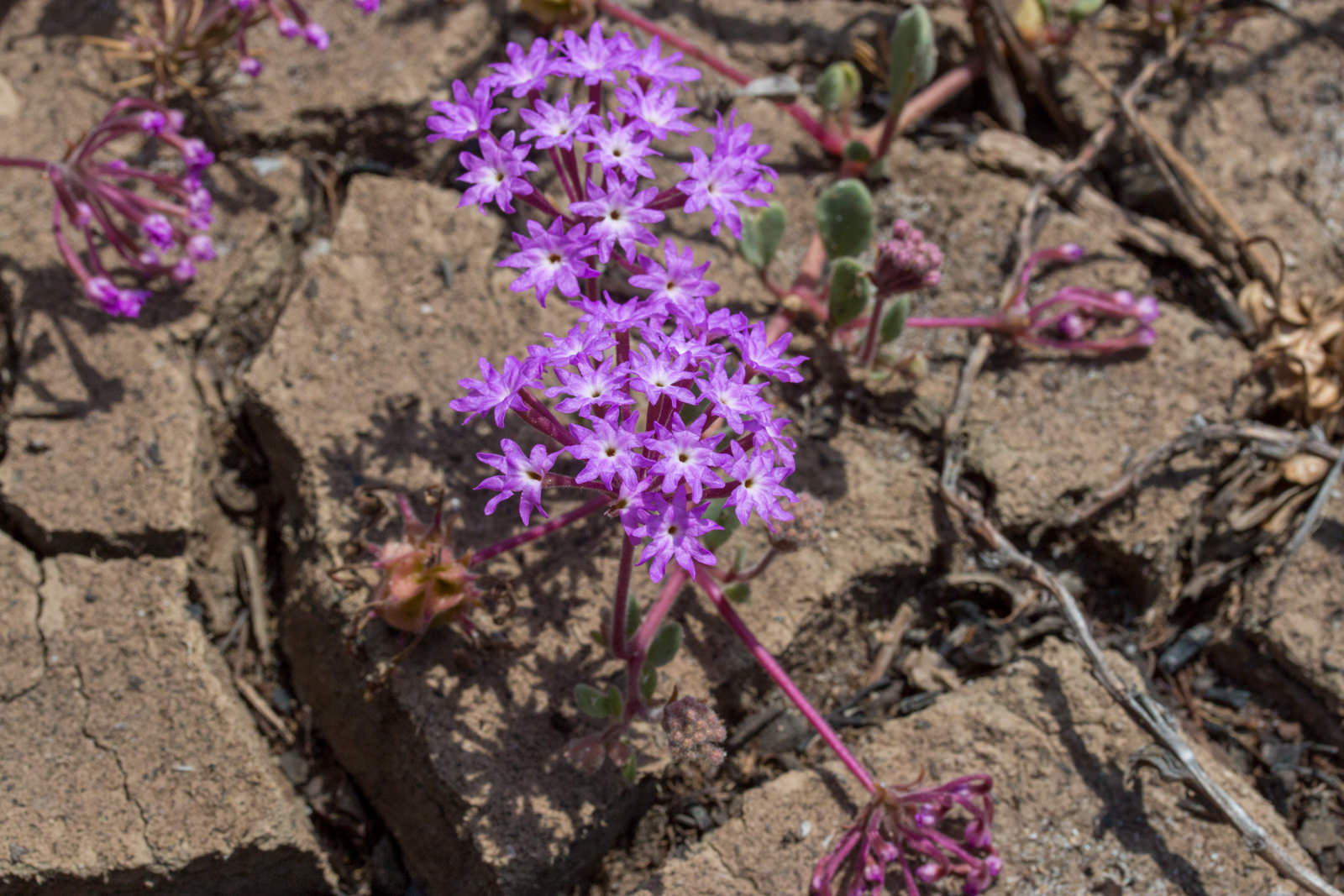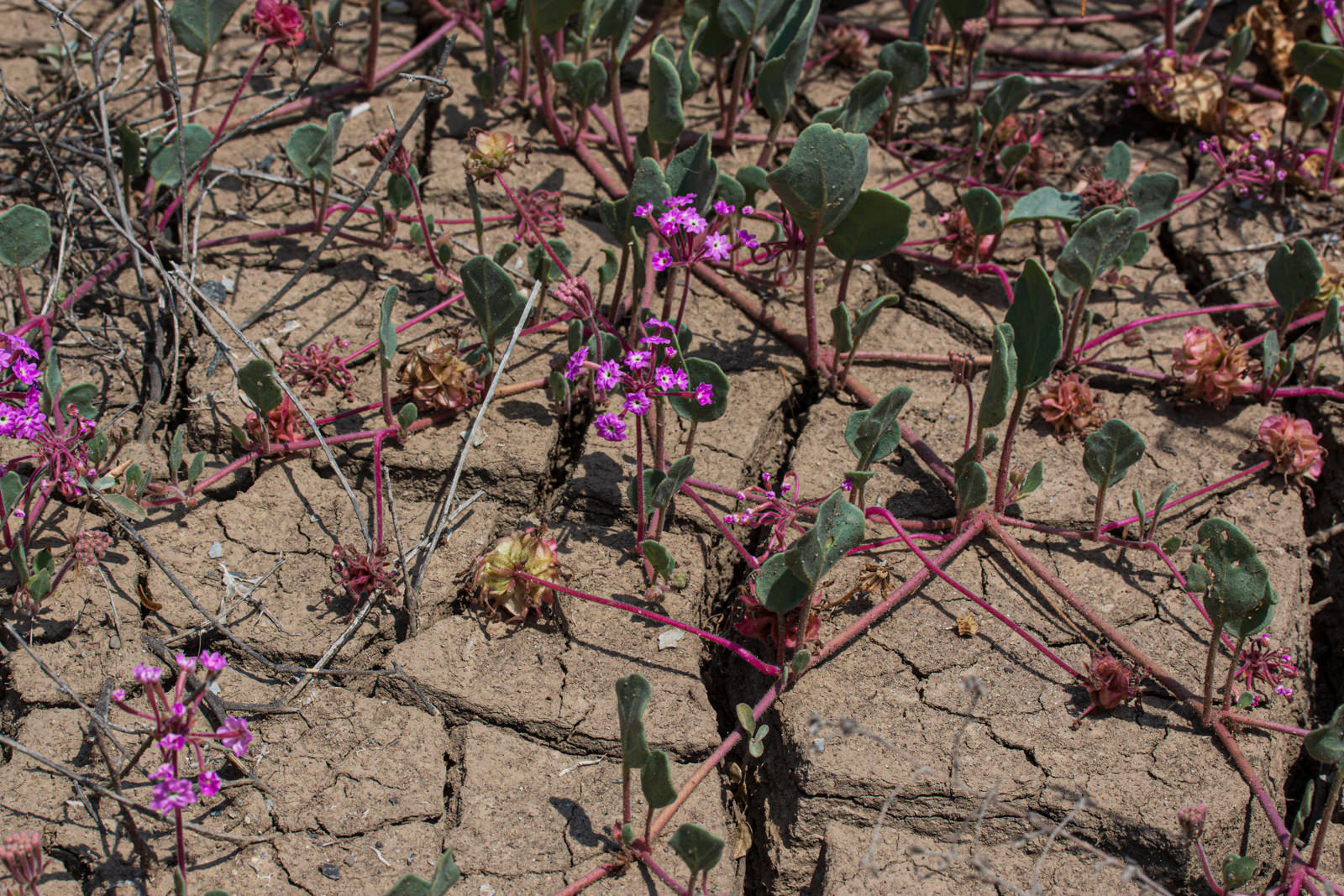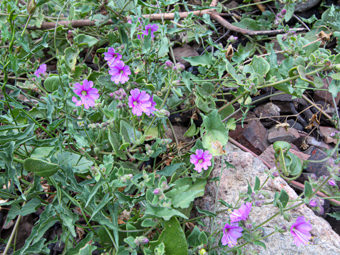Sand Verbena
- Abronia maritima
| Common Name(s): | Sand Verbena |
| Scientific Name: | Abronia maritima |
| Family: | Nyctaginaceae (Four O'Clock) |
| Plant Type: | Perennial |
| Size: | less than 12 inches |
| Habitat: | coastal dunes |
| Blooms: | February to October |
| Fire Response: | Germinate from Seed |
Red Sand Verbena Abronia maritime is a brightly colored succulent found where the Santa Monica Mountains rise from the coast. Though rare because of limited distribution, this plant is native to dunes and sandy soils of coastal California especially along the inland side of the beaches in Santa Monica Mountain National Recreation Area between Sycamore and La Jolla Canyons. In bloom from February to October, these flowers provide a beautiful contrast to another coastal sand dwelling plant - Beach Evening Primrose Camissoniopsis cheiranthifolia.
The clustered flowers of Abronia maritime lack petals - colorful bracts perform the function and form a five lobed tubular calyx. Somewhat hard to find are the five stamens and one pistil used to create the next generations of flowers.
Opposite leaves, thick oval 3/4 to 2 1/4 inches long on 3/4-inch stems.
What is in a name? The common name, Sand Verbena, might suggest that we relate this plant to the genus verbena - of which there are 250 species. Here the scientific name is much more helpful in determining where this plant fits in. Abronia plants are in the Nyctaginaceae family - Four o’clocks.
Fascinating info: Classified as a halophyte (requires saline water) which it receives primarily in the form of sea spray) and cannot tolerate fresh water or prolonged dry conditions. Leaves have adapted to filter and store salt.
The terrain that Abronia maritima prefers has become less common - dunes of public and private beaches groomed regularly for the benefit of humans and not plants that have adapted to live only in this ecological niche. The plant’s main root needs to be deep within the dune where the plant can continuously tap soil moisture. Shallow Nodal roots anchor each radiating segment, often extending several meters from the plant’s center help to capture ephemeral water and to anchor the plant.
Link to Calflora.net - the best source of this fascinating information.
Name Origin: Abronia: from Greek abros meaning "graceful or delicate," in reference to the appearance of the bracts below the flowers. The genus Abronia was published in 1789 by Antoine Laurent de Jussieu.maritima of the sea.
Contributed by George Sherman
Featured Plants in the Nyctaginaceae (Four O'Clock) Family:
Last modified: August 21 2024 15:18:54.
Number of Images: 7
Image Size Total: 2,550,856
References:
Wildflowers of the Santa Monica Mountains, by Milt McAuleyFlowering Plants: The Santa Monica Mountains, Coastal and Chaparral Regions of Southern California, by Nancy Dale
Chumash Ethnobotany: Plant Knowledge Among the Chumash People, by Jan Timbrook
Leaf Shapes Primer - Botanical Terms for Leaves: - Link

